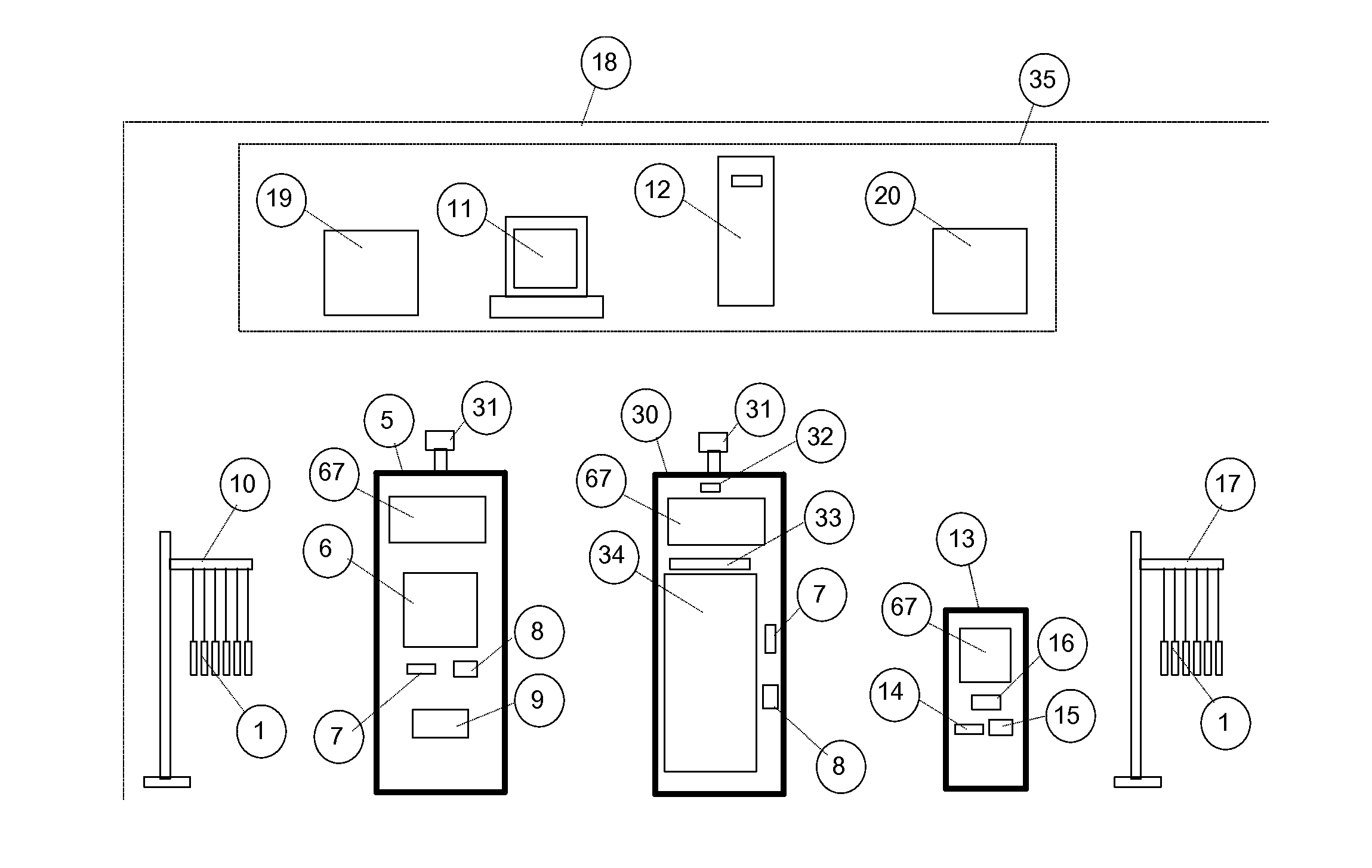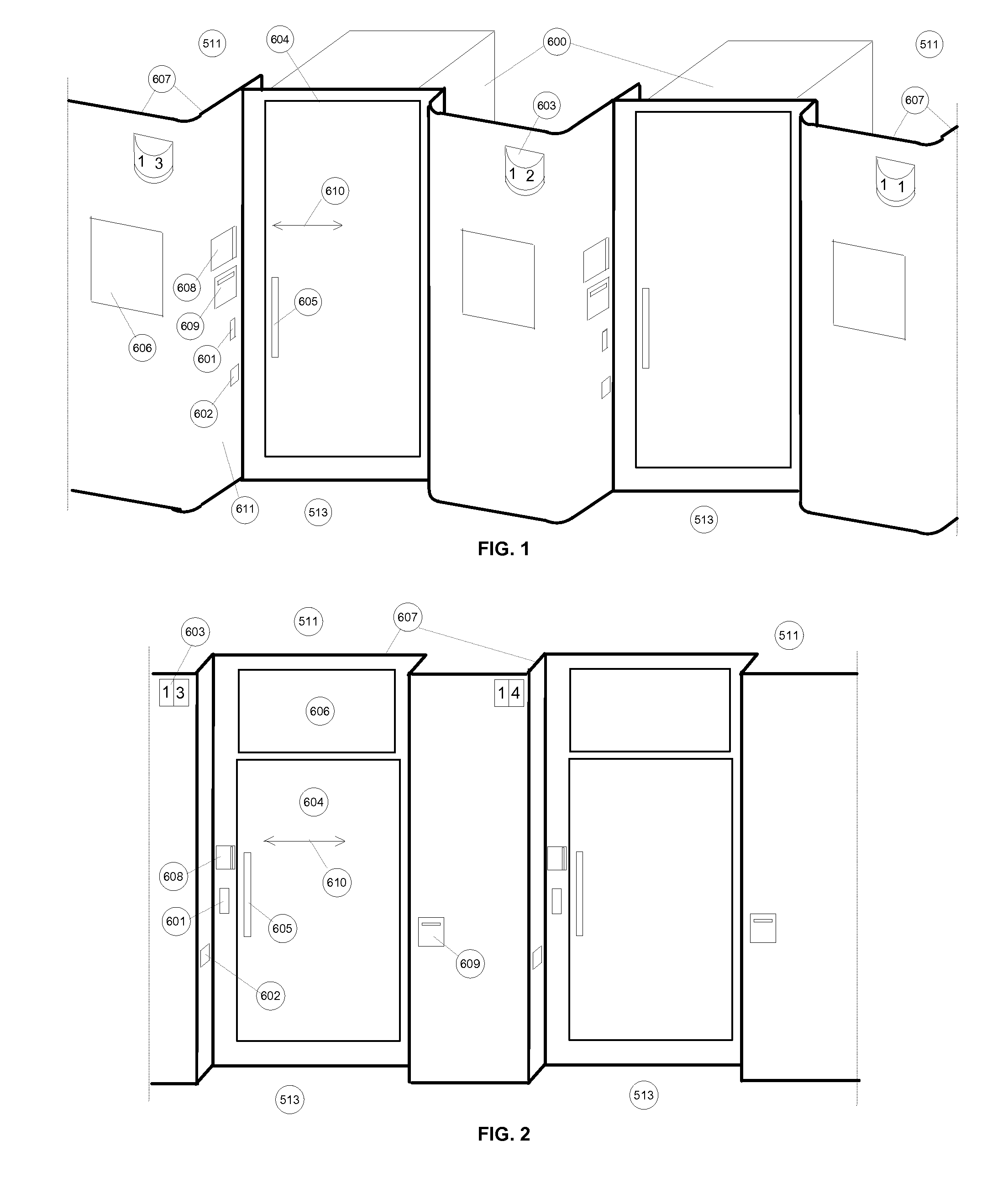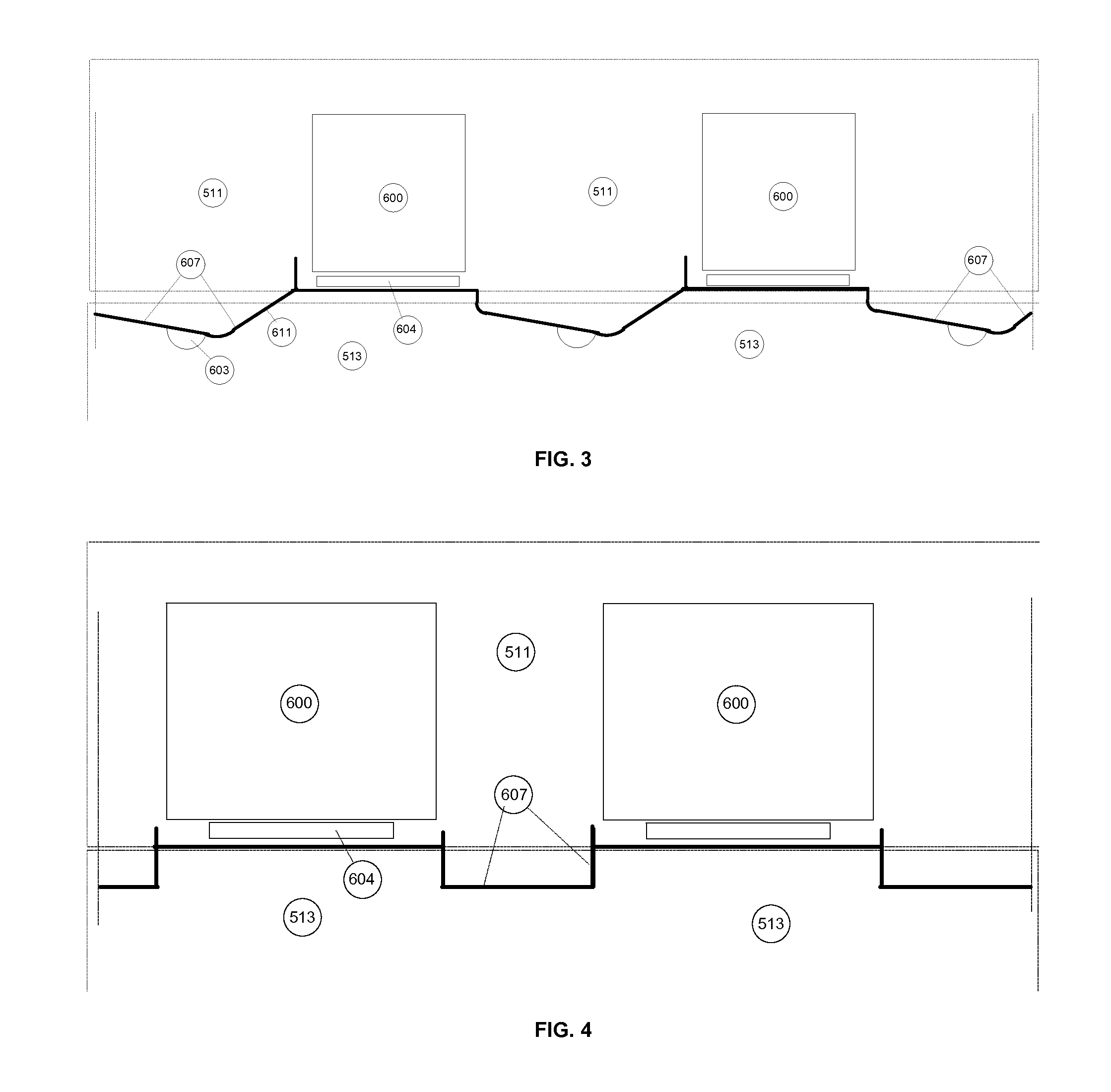Apparatus improving item transactions with real-time controls and navigation
a technology of item transactions and controls, applied in the field of applicability of applicability to improve item transactions with real-time controls and navigation, can solve the problems of affecting the quality of items, and significant amount of rfid devices in enclosed facilities such as stores, and achieves the effect of reliable mating and engagemen
- Summary
- Abstract
- Description
- Claims
- Application Information
AI Technical Summary
Benefits of technology
Problems solved by technology
Method used
Image
Examples
Embodiment Construction
[0061]FIG. 1 through FIG. 4—illustrate example of configurations of the Apparatus for applications, including grocery stores. Configurations include: layout of Apparatus; selected devices; interface between devices. Each configuration is designed to meet specific store requirements, in terms of most efficient utilization of available resources, including: available space; energy; people, and provide the best quality at competitive prices to customers. The power distribution for the entire Apparatus could be implemented using patent-pending “plug-and-power” technology, submitted by the Applicant under UPSTO application Ser. No. 12 / 148,771. All modules of the apparatus, including illustrated Product Modules (600), and other devices shown—could be configured as illustrated and described on respective figures of this application. For simplicity, the layouts are for illustrating and describing selected features of the Apparatus, and not all devices or components of the Apparatus, includi...
PUM
 Login to View More
Login to View More Abstract
Description
Claims
Application Information
 Login to View More
Login to View More - R&D
- Intellectual Property
- Life Sciences
- Materials
- Tech Scout
- Unparalleled Data Quality
- Higher Quality Content
- 60% Fewer Hallucinations
Browse by: Latest US Patents, China's latest patents, Technical Efficacy Thesaurus, Application Domain, Technology Topic, Popular Technical Reports.
© 2025 PatSnap. All rights reserved.Legal|Privacy policy|Modern Slavery Act Transparency Statement|Sitemap|About US| Contact US: help@patsnap.com



